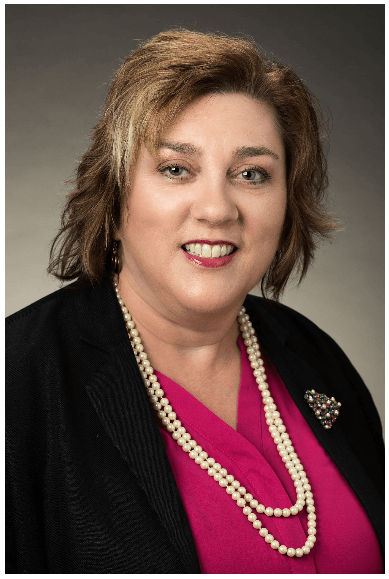The Joint Commission released its Quick Safety, Issue 50: "Developing resilience to combat nurse burnout" advisory in July.
It's a document aimed at offering you and your employers tools to help combat nurse burnout by developing resilience.
"Burnout is a major safety issue," said Lisa DiBlasi Moorehead, EdD, MSN, RN, CENP, associate nurse executive with The Joint Commission. "Nurses who experience burnout leave an organization and perhaps even leave the nursing profession."
Researchers have found nurse burnout -- exhaustion, cynicism and inefficiency that can result from a nurse's response to chronic emotional and interpersonal stress at work -- negatively impacts not only nurses and nurse retention, but also patients. Patient satisfaction, outcomes and safety suffer. Even mortality can increase with nurse burnout, according to reports. There are ways to help reduce nurse burnout and its consequences by giving nurses access to leadership-supported interventions such as mindfulness and resilience training. Not all resources and strategies come from experiences in healthcare. The advisory mentions Daniel Pink's book "Drive." In the book, the author addresses three factors that increase performance and satisfaction:
- Autonomy or being self-directed and part of decision making
- Mastery or competency to do the job well
- Purpose in meaningful work
"Healthcare can learn from other disciplines and his three concepts to improve job satisfaction ring true for nurses in the context of what most of us want in our work," Moorehead said. "We all want to be part of something greater than ourselves. If any of these three are missing, job dissatisfaction can occur, and this can lead to burnout."
Nurse leaders can build resilience at work
Nurse leaders, individual nurses and nurse faculty have roles in preventing burnout. [caption id="attachment_56368" align="alignleft" width="202"] Lisa DiBlasi Moorehead, EdD, MSN, RN, CENP[/caption] Nurse leaders have the responsibility to create resilient work environments. Acknowledging burnout is a risk and it does exist is a first step, according to Moorehead. "This Quick Safety encourages nurse leaders to evaluate burnout, its causes, take steps to improve or eliminate [those causes], measure improvement and then start again," she said. An important characteristic when building a resilient work environment is the ability for staff to discuss concerns and leaders to listen, learn and act. "Staff have to be comfortable in speaking up about burnout and its causes, as well as other issues and opportunities for improvement," Moorehead said. "Leaders have the responsibility to make improvements in work processes as identified by those who do the work and allow staff to participate in decisions affecting their work."
Lisa DiBlasi Moorehead, EdD, MSN, RN, CENP[/caption] Nurse leaders have the responsibility to create resilient work environments. Acknowledging burnout is a risk and it does exist is a first step, according to Moorehead. "This Quick Safety encourages nurse leaders to evaluate burnout, its causes, take steps to improve or eliminate [those causes], measure improvement and then start again," she said. An important characteristic when building a resilient work environment is the ability for staff to discuss concerns and leaders to listen, learn and act. "Staff have to be comfortable in speaking up about burnout and its causes, as well as other issues and opportunities for improvement," Moorehead said. "Leaders have the responsibility to make improvements in work processes as identified by those who do the work and allow staff to participate in decisions affecting their work."
Staff must watch for signs of nurse burnout
Staff have a role in this too. They need to recognize signs of burnout in themselves and others, so they can take steps to address those symptoms. They also should take steps to take care of themselves and develop personal resilience, according to Moorehead. Challenging patients or clinical scenarios and other stresses at work can erode resilience. Some nurses become overwhelmed by the challenges they face, while others thrive because they can adapt to changes and maintain fulfillment, according to the advisory. Sometimes, it's simple communication among colleagues that helps nurses thrive despite the challenges.
"One strategy that has been helpful to me through the years is to develop relationships with colleagues, mentors and coaches," Moorehead said. "In the past, I appreciated a colleague who came to me because of his concern that I was experiencing signs of burnout -- exhaustion, cynicism, inefficiency. I didn't agree at first, but after I thought more about his comments and did my own self-reflection, he was right. I took action to improve my own resilience and was able to decrease those signs of burnout and find joy in my work again."
Some of a nurse's ability to avoid burnout comes naturally -- and some is learned. Even nursing school faculty have a responsibility to help arm nurses with what they need to know to build resilience and prevent burnout, Moorehead said. "Faculty should teach students to recognize the signs of burnout, be able to discuss common causes, and look for work environments that foster resilience as they are making decisions about where to start their careers," she said.
Research can help you prevent nurse burnout
Nurses and nurse leaders can refer to the nursing literature and other leadership and management literature for resources they can use to prevent and address nurse burnout.
"The Quick Safety advisory has a robust reference list included at the end of the document that provides tools to measure burnout, for example," Moorehead said. "A good first step is for staff nurses to evaluate themselves for signs of burnout and to do an inventory of their own sources of resilience. The same can be said for nurse leaders. Nurse leaders have another layer of responsibility and that is to begin the discussion of burnout among staff; make it OK to discuss burnout and strategize for [how] resilience can be improved within the work environment. Beginning the discussion is a good -- and necessary -- first step."
According to The Joint Commission, healthcare employers can follow these safety actions to help nurses develop resilience.
- Provide education for nurses, preceptors and nurse leaders to identify behaviors caused by burnout and compassion fatigue.
- Improve clinician well-being by measuring it, developing and implementing interventions, and then re-measuring it.
- Offer nurses opportunities to reflect on and learn from practice and other practitioners (e.g., positive role models).
- Develop or use current tools for staff to use to anticipate opportunities and problems.
- Work with internal team to assess if the current electronic health record (EHR) system may be customized to optimally support nursing workflow.
- Conduct regular staff meetings with discussions on new organizational policies, processes and outcomes from higher leadership meetings. Engage nursing input in these meetings.
Take these courses related to nurse burnout:
Harmonize Diversity and Improve Health Outcomes (1 contact hr) Healthcare today thrives on teamwork and partnering with patients to achieve exceptional health outcomes for staff and patients alike. Positive and productive relationships depend on personal and team awareness of various personality types across the continuum of their partners and their willingness to bridge the gaps among those differences to create a harmonic work climate. Having a genuinely shared healthcare plan, driven by patient participation, team connectedness, and improved resilience, maximizes communication, morale, and collaboration, and minimizes team burnout, job dissatisfaction, and general negative health outcomes of patients and staff. This module introduces the concept of personality sensitivity and gives examples of how personality-sensitivity training can improve performance, satisfaction, and outcomes. Managing Your Time (1 contact hr) Time management is a core skill of 21st century nurses. It's the key to improving outcomes, keeping patients safe, and reducing burnout. This module identifies strategies to help nurses be more productive, more efficient, and less stressed. It explores ways to improve nurses' ability to manage their time in their personal and work lives by exploring time-management barriers and identifying the strategies needed to overcome those barriers. The how to's of delegation, a complex skill that's central to time management, is included. Nurses who gain control over how they manage their time boost their performance, gain a sense of satisfaction, and reduce their daily stress. Research Reveals the Benefits of Meditation (1 contact hr) Healthcare practitioners in various disciplines and their patients use meditation. Meditation training has proved an effective adjunct therapy for many conditions and can be discussed as an option among healthcare providers. Meditation and relaxation techniques are part of a program to help patients reverse heart disease, for example. Healthcare programs are incorporating meditation into many clinical practices. A healthcare provider's relationship with patients can influence the outcome of clinical problems as well as the satisfaction of provider and patient. A healthcare provider's physical, emotional and mental health can influence the provider-patient relationship. By reducing stress and developing concentration, meditation cannot only increase concentration but also may help prevent job burnout. The result is a better relationship with patients and perhaps a method for self-healing. This course discusses meditation and the research supporting its use when caring for patients with a variety of conditions






